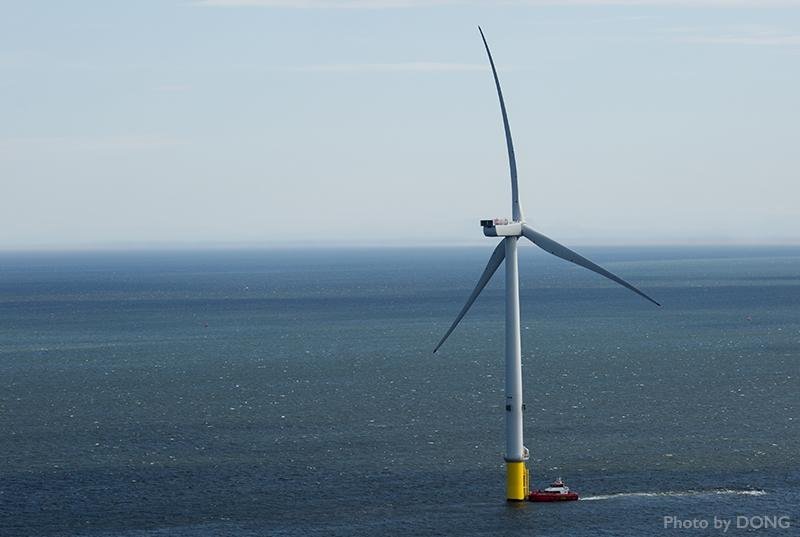A new study takes a deep look into the kinds of Jones Act vessels that will be needed to support the developing offshore wind farm industry in the Northeast. “The U.S. Jones Act Compliant Offshore Wind Turbine Installation Vessel Study” identifies two types of vessels, their costs and how much wind power capacity is needed to make the investment worthwhile.
Prepared for the government energy authorities in New York, Massachusetts and Rhode Island using a Department of Energy grant, the study offers a framework for understanding what is required of a wind turbine installation vessel on the East Coast from technical and financial perspectives. It looked specifically at potential offshore development in these three states.
It is one of three reports commissioned by the states to create a "road map" for wind power development. The other reports, all released this month, look at job creation and the challenges and opportunities facing offshore wind.
The new study designed two U.S.-made vessels that would meet requirements of the 1920 Jones Act. That law requires vessels carrying cargo between U.S ports to be built in the U.S. and crewed by U.S. mariners. An offshore wind turbine that is secured to the ocean bottom is considered a U.S. port.
"A suitable installation vessel is a key enabler for the successful development of any large-scale wind farm," wrote the study's authors with GustoMS, a Houston-based design and engineering company. They added a caveat that such vessels are "very large investments that can only be supported with a pipeline of work."
A five-turbine, 30-MW project off of Rhode Island is the first and only offshore wind farm to be built in the U.S. so far, but there are plans to build more along the East Coast.
Based on potential offshore wind development areas in New York, Rhode Island and Massachusetts, the study zeroed in on two different vessel options for that region: feeder or transit.
The transit option would be a self-propelled wind turbine installation vessel (WTIV) that transits into port, loads components and material and then goes back to the work site where it will install the components. The vessel would be fitted with a dynamic positioning system that hold the feet in place for jacking or maneuver to a specific location, and it would accommodate about 90 crewmembers.
With the feeder option, the WTIV remains offshore, while a jackup feeder barge is used to transport materials and components to the site where the WTIV is waiting to install them. Two or more feeder units would be needed to make sure the WTIV is constantly supplied. The installation vessel can either be the same as the transit strategy or a more cost-efficient unit that doesn't include the features required for the transit strategy. The study says it would take 22 months to install a set of 100 turbines.
Designs for these vessels were drawn up for the study and submitted to several U.S. shipyards. Three yards (World Marine, Edison Chouest/Bollinger and Conrad Industries) returned with estimated prices of $87 million for a feeder barge and $222 million for an WTIV. Financing would be available through Marad's Title XI shipbuilding program that provides financing at reduced rates, the study notes.
Based on a cash flow model developed by the study's authors, at least 10 years of work, or a pipeline of about 3,500 to 4,000 MW of offshore wind capacity would be required by an WTIV owner to provide a reasonable combination of day and internal rates of return. Construction time would be 34 months.
For the feeder barge, it would take 16 years of work at a day rate of $85,000 for an internal rate of return of 10%. Build time would be about 25 months.
Either option would require "a group of states and developers to coordinate on an identified pipeline of projects."
Although the study assumes that wind farm vessels must be Jones Act compliant, it notes that those that install tower and turbine components offshore and are not involved in transporting these components from the U.S. to the offshore site can be a foreign-flag vessel. This scenario would involve using a Jones Act feeder barge to transport components offshore to a foreign WTIV that will lift the items off the barge onto the foundation without moving.
According to the job creation report, U.S. Job Creation in Offshore Wind, building and maintaining offshore capacity of 8 GW could create at least 16,000 10-year jobs. If this plays out, more investment in new factories and U.S-built vessels would result, according to the study prepared by BVG Associates, renewable energy consultants based in the U.K.
The report on Northeast Offshore Wind Regional Market Characterization was optimistic about the future for offshore wind in the Northeast. Sustainable Energy Advantages, Framingham, Mass., wrote that the region is "well-positioned to benefit from the deployment of offshore wind" to reduce its reliance on fossil fuels, diversify its energy supply mix and create local clean energy jobs.





